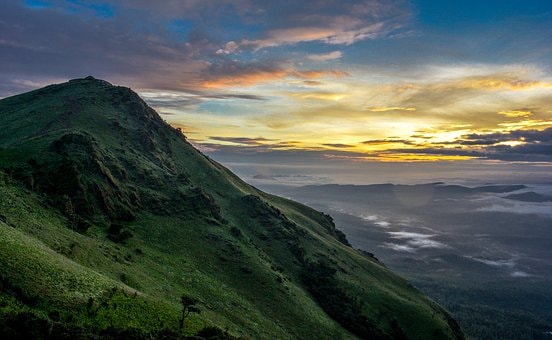India is a land of diverse physical features among which various mountain ranges, and plateaus. The Deccan Plateau is a plateau bordered by two mountain ranges, the Western Ghats and the Eastern Ghats. Particularly, the Western Ghats and the Eastern Ghats are two mountain ranges from the peninsular India which are located respectively on the western and eastern edge parts of India. Taking that into consideration, we present the main difference between Eastern Ghats and Western Ghats.
In technical terms, Ghats in Hindi, means rivers landing stairs or mountain passes but the definition extended to include the meaning of mountains itself. It should be noted that the terms differ in its meaning depending on the context; for instance, it could mean riverbanks that have been artificially terraced for religious purposes. Also, it could refer to a range of stepped hills with valleys.
Difference Between the Eastern Ghats and the Western Ghats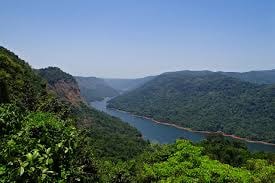
- The Eastern Ghats are a chain of hills from the Mahanadi River in the north and Vaigai River in the south, whereas the western Ghats are a chain of hills starting from the Tapti valley in the North to Kanyakumari in the South.
- Unlike the Western Ghats, the eastern ones run parallel to the East Coastal Plain from Orissa to the Nilgiri hills. The western Ghats run nearly in parallel to West Coastal Plain in a north-south direction.
- Additionally, the Eastern Ghats have been divided into many discontinuous parts by large rivers, but the western Ghats are continuous where they are crossed through passes only.
- Some of the hill areas included in the eastern Ghats are nallamalas, palakondas,velikondas, and seshachalam hills. On the other hand, the western Ghats’ hill areas include Annamalai, cardamons, and Palani hills.
- Moreover, the average width of eastern Ghats varies from 100 to 200 km. Nevertheless, the western Ghats average width differs from 50 to 80 km.
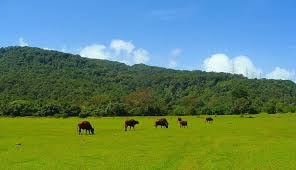
- Concerning the elevation average, the eastern average elevation is nearly 600 m above the sea level while the western one is between 900-1100 m above the sea level.
- Furthermore, there are no big rivers originating from the Eastern Ghats, but most of the rivers rising drain into the Bay of Bengal. However, the Western Ghats are a major source of several large rivers that flow in Peninsular India. Most of the rivers rising in the western Ghats drain into the Arabian sea.
- Besides, the highest peak in eastern Ghats is found at chintapalli called the Jindhagada peak (1690 m) which is also named Arma Konda. Alternatively, the highest peak of Western Ghats is found near Gudalur named Anaimudi and its elevation is 2695 m. This peak is considered as Everest of South India.
- In terms of biodiversity, the western Ghats are highly enriched in flora and fauna, tropical evergreen forests, rivers, wildlife sanctuaries, and national parks. On the other hand, the Eastern Ghats are not as enriched compared to the Western Ghats.
- In addition to that, the soil in eastern Ghats is not as fertile as the western one. While the latter’s soil is very fertile, the land grows rice, rubber, spices, and fruits such as cashew nuts, coconuts, etc. However, the eastern Ghats grow groundnuts, cotton, tobacco, along with rice, coconuts and so on.
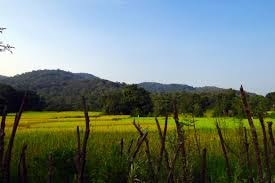
- Further, the eastern Ghats receives rain mostly in winter through North-eastern monsoon, but it is lesser than the western strip. Nonetheless, the western Ghats experience orographic rain mostly in summer because of the summer monsoons. In here, the temperature is hot and the climate is moist.
- To be precise the eastern Ghats are locally known by several names such as Palkonda and Nallamalai ranges in Andhra Pradesh. Also Madugula, Konda, and Maliya range in Odisha; however, in the south they are known as detached low hills namely Javdi, Panchaimalai, Shevroy, Varushnad, and Sirumalai hills. On the other hand, western Ghats are famous by several names among which Nilgiri hills in Karnataka, Sahyadri in Maharashtra, Cardamom hills in Kerala, and lastly Anaimalai hills in Tamil Nadu.
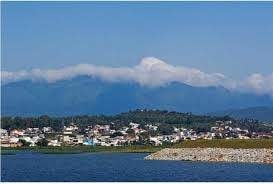
In order to summarize the difference between eastern Ghats and the Western Ghats, we provided a table to visualize these differences and grasp a clearer idea.
| The Eastern Ghats | The Western Ghats | |
| 1 | Nature: a chain of hills from Mahanadi River in the north and Vaigai River in the south. | Nature: a chain of hills starting from Tapti valley in the North to Kanyakumari in the South. |
| 2 | Direction: they run parallel to the East Coastal Plain from Orissa to the Nilgiri hills. | Direction: they run in parallel to West Coastal Plain in a north-south direction. |
| 3 | Physical divisions: divided into many discontinuous parts by large rivers. | Physical divisions: continuous where they are crossed through passes only. |
| 4 | Included hills: are nallamalas, palakondas,velikondas and seshachalam hills. | Included hills: Annamalai, cardamons, and Palani hills. |
| 5 | Average width: varies from 100 to 200 km | Average width: differs from 50 to 80 km. |
| 6 | Elevation average: 600 m above the sea level | Elevation average: 900-1100 m above the sea level |
| 7 | Source of the river: the rivers rising drain into the Bay of Bengal. | Source of the river: large rivers rising drain into the Arabian sea. |
| 8 | The highest peak: Jindhagada peak (1690 m) | The highest peak: Anaimudi Peak (2695 m) |
| 9 | Biodiversity: not as enriched compared to the Western Ghats. | Biodiversity: enriched in flora and fauna, tropical evergreen forests, wildlife sanctuaries, and national parks. |
| 10 | Soil fertility: it is less fertile and it grows groundnuts, cotton, tobacco, along with rice, coconuts, and so on. | Soil fertility: the soil is very fertile; the land grows rice, rubber, spices, and fruits such as cashew nuts, coconuts, etc. |
| 11 | Rainfall: they are lesser and they receive rain mostly in winter through North-eastern monsoon. | Rainfall: orographic rain mostly in summer because of the summer monsoons. |
| 12 | Other names: Palkonda and Nallamalai ranges in Andhra Pradesh. Also, Madugula, Konda, and Maliya range in Odisha. In the south, Javdi, Panchaimalai, Shevroy, Varushnad, and Sirumalai hills. | Other names: Nilgiri hills in Karnataka, Sahyadri in Maharashtra, Cardamom hills in Kerala, and lastly Anaimalai hills in Tamil Nadu. |
To sum up, the above mentioned Ghats (eastern and western) differ in several points such as nature, direction, physical divisions, width, source of rivers, rainfall, elevation, and so on. The difference stated in this article provides a better understanding of what Ghats are and how do they differ from each other in many aspects.
